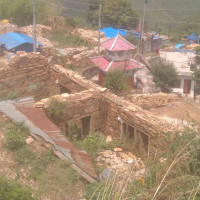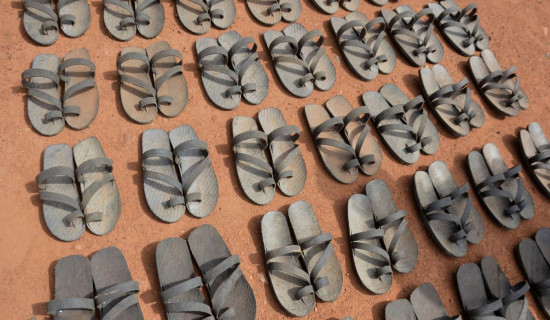- Sunday, 20 July 2025
Brindaban Gaushala: A new destination for pilgrims
By Hariprasad Koirala,Urlabari, June 20: New Brindaban Gaushala has emerged as a new religious tourism destination for Hindu devotees. Located in Sundar Haraicha-5 of western Morang, around 2,500 domestic and international tourists visit this site every day.
The foundation of New Brindaban Gaushala was laid in 2008/09 (2065 BS) by Swami Dinbandhu Shastri, who formed the Shree Radheyshyam Sewa Trust and began exploring the site's religious and archaeological significance.
Every year, a large number of Nepali pilgrims travel to India for religious tours, often spending significant amounts of money. Many have even reported being robbed during such journeys.
Swami Shastri said that the aim of New Brindaban Gaushala is to retain Nepali religious tourists within the country while also attracting Indian visitors.
A major attraction of the site is the cow statue, which is claimed to be the largest in the world. It stands on a 13-foot-high base and reaches a height of 36 feet and 3 inches, including a calf. The entire structure was built at a cost of Rs. 15 million, with the statue itself constructed for Rs. 3.93 million.
Shastri also stressed the spiritual significance of the region between Itahari and Kanepokhari. He said that many places referenced in the Mahabharata, such as Bhimachauri, Gothgaon, Biratchowk, Indrapur and Kanepokhari, are part of this geographical area and are considered sacred.
Artifacts like jewelry, weapons, and stone idols from the Mahabharata era are still being discovered here.
Situated on the banks of the Budhiganga River, New Brindaban Gaushala not only evokes the essence of India’s Brindaban but also represents a location with deep Mahabharata connections.
Swami Shastri said that this area was selected for New Brindaban because it was once a playground of Lord Krishna. With the support of religious and social leaders, various physical infrastructures are currently under construction.
The government has extended support by constructing access roads, installing electricity and building embankments along the Budhiganga River.
The municipality has also contributed toward the construction of the cow statue. Shastri expressed concern over the decline of native cow breeds due to artificial insemination and commercial milk trade. He has launched a campaign to protect and preserve native breeds. Currently, there are 40 cows in the Gaushala.
Initially, the New Brindaban project began with 14 katthas (about 0.47 hectares) of land donated by Gopal Bahadur Neupane. Locals later donated additional land, and the Trust is now building infrastructure on 12 bighas of land.
Two ashrams have already been built, along with an Anusthan Bhawan (ritual hall) that can accommodate 5,000 devotees, a garden around the pond and metal statues of 14 sage-lineage (gotra) propagators.
A Vedic Gurukul (traditional school) also operates in Brindaban, where 52 students from across the country are studying in a residential setting. Over the past 17 years, infrastructure worth Rs. 200 million have been developed, entirely funded by donors.
Though the government has provided support with roads, water, electricity, bathing areas at Budhiganga and a suspension bridge to Itahari, the Gaushala's grandeur and attraction have expanded even further.
If proper accommodation is arranged, up to 5,000 devotees could visit daily, Shastri said.















